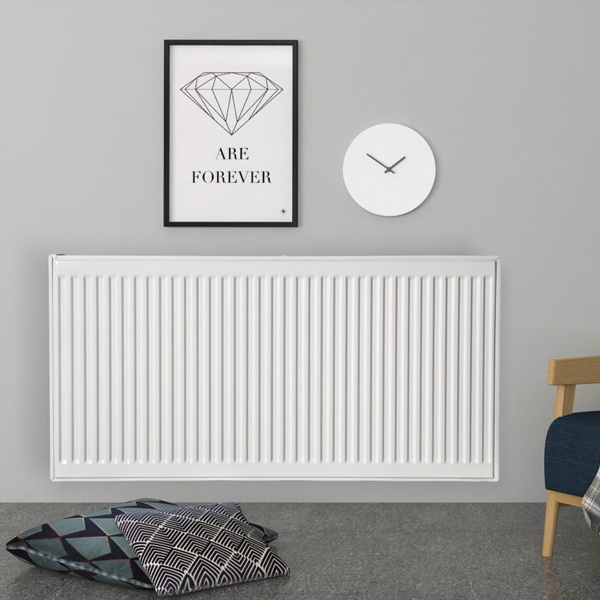Maintenance is extremely important no matter where it is placed, and it is also crucial for the use of household appliances. As for heating equipment, it goes without saying. To ensure a long service life of heating equipment, in addition to paying attention during daily use and regular cleaning, the maintenance of the equipment also plays a significant role. Next, the editor of Elma steel Plate Radiator will take you to learn about it together.
When the heating system is in operation for the first time, it is important to remember to debug it. Adjust each riser valve to the appropriate position, open the manual air release valve of each radiator, and release the air remaining in the equipment. You can also open the air release valve of the air collection tank on the top of the installation system to release air. Keep doing this until each radiator in the room is warm up before the debugging is completed. But remember that if the equipment debugging is completed, the valve needs to be firmly fixed and cannot be opened or closed at will.
There should be as much space for heat dissipation as possible where the radiator is installed in the room. Do not stack any miscellaneous items on or in front of the radiator, as this will affect the radiator's heat dissipation effect.
Do not change the position of the radiator at will after it is installed. Before the radiator is installed, its installation position is designed to be conducive to indoor heating, which can effectively ensure air circulation and relatively uniform temperature in all corners of the room. If we change the installation position of the equipment at will, it will cause an imbalance in the indoor temperature, with one area being hot and another not. In addition, there is the aspect of pipelines. If the radiator is transplanted, it is very likely to leak, causing unnecessary losses to the home.

The water in the heating system should not be discharged at will. If there is no hot water in the pipeline, cold water should be replenished. This will cause the pipeline system to need to maintain a certain pressure. The more hot water is lost, the faster the water temperature in the pipeline will drop, resulting in a decrease in indoor temperature. Here, I would like to remind friends who use steel radiators to close the valve in time when the heating stops to fill the radiator with water. This can extend its service life. If conditions permit, copper-aluminum composite radiators can also be maintained with full water.
The radiator gets hot every year, so maintenance is a particularly crucial step. And it should be used correctly in daily life to ensure that the service life of the radiator is not shortened.
After the heating season ends, if it is centralized heating, just close the inlet and return water valves of the radiator in time to fill the radiator with water. If it is an independent home heating system, higher maintenance requirements can be placed on the heating system. When the pump is shut down for inspection, partial or all water can be drained, then it can be refilled, heated and run, the air can be vented, and the pump can be stopped.
Before the heating system is put into use after installation, a pressure test should be conducted, and the system should be flushed and vented to ensure full water operation.
Before the next heating season arrives, users of independent heating systems can decide whether to change the water before operation based on the water quality.
Elma Steel Plate Radiator Warm Reminder:
Although radiators are only used in winter, reasonable maintenance measures should be taken when they are not in use to extend their service life. On a daily basis, the surface should be cleaned with a soft towel and a brush. Do not use organic solvents to clean them.
This article is from:https://www.3171688.com/com/aemnqp/news/itemid-30472.html